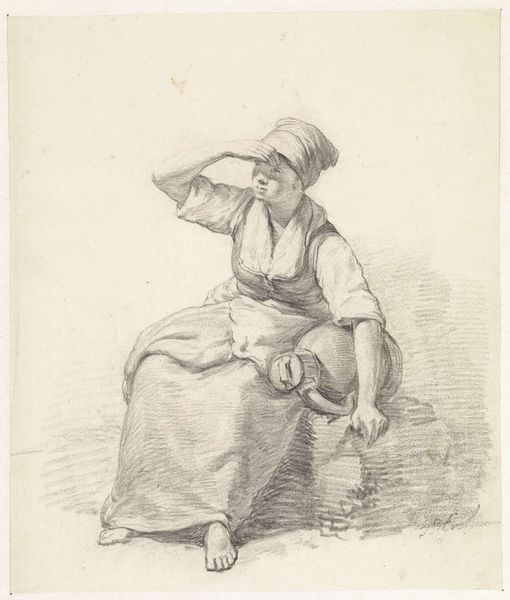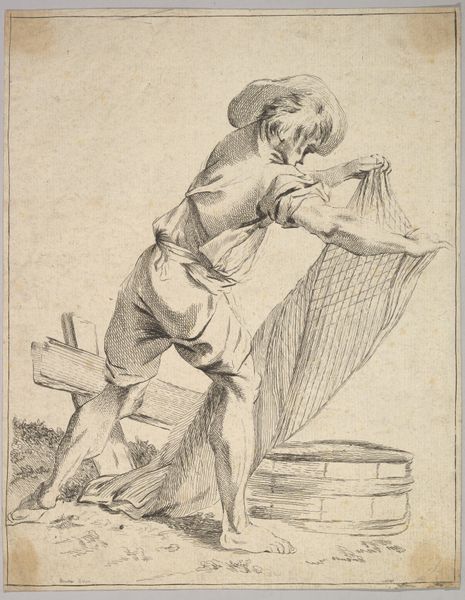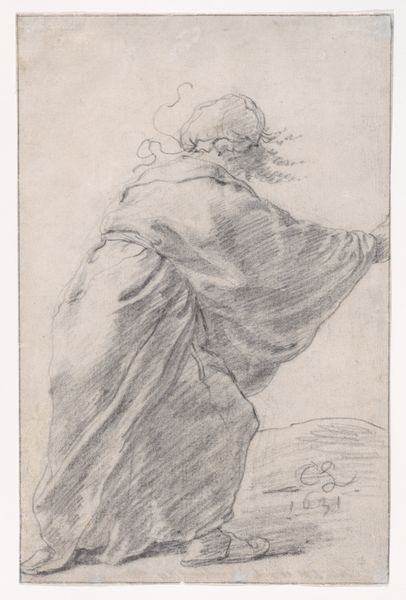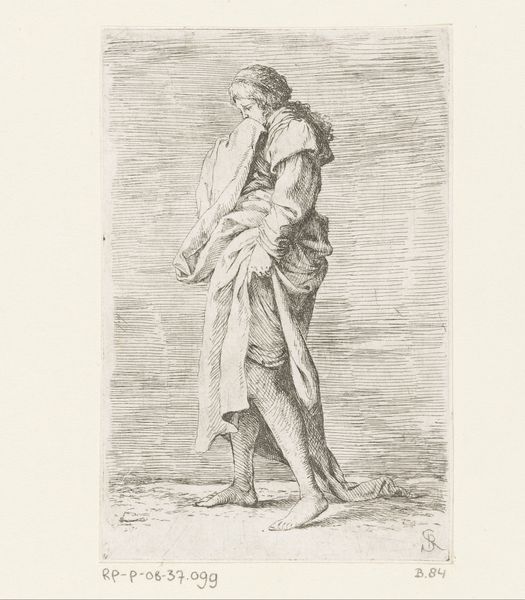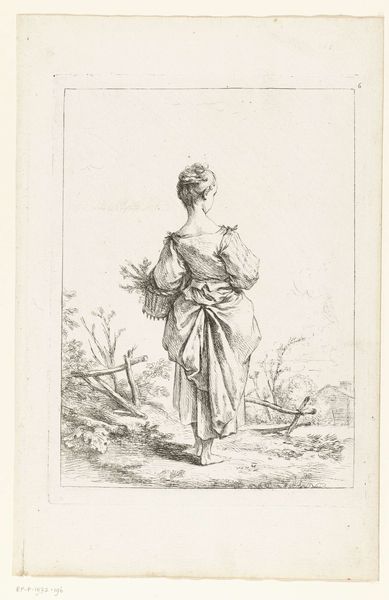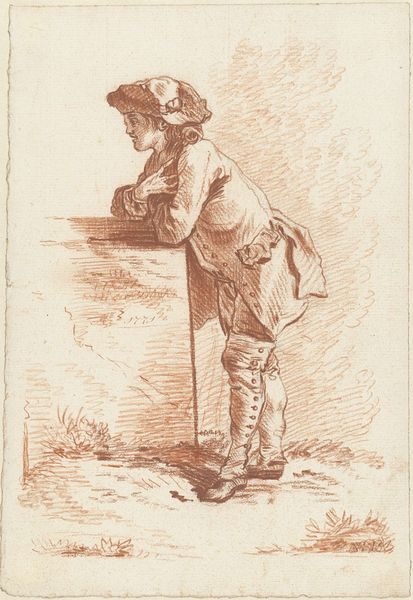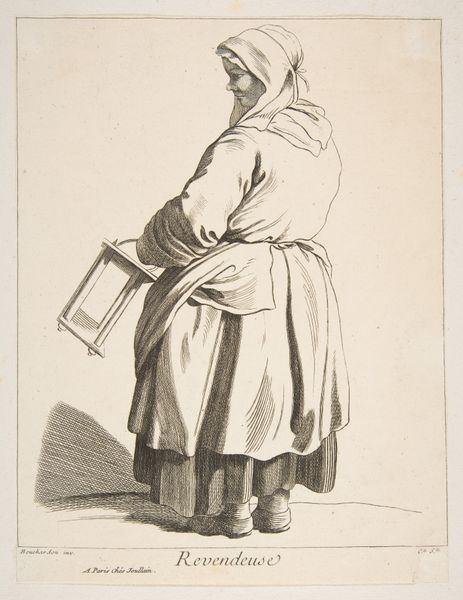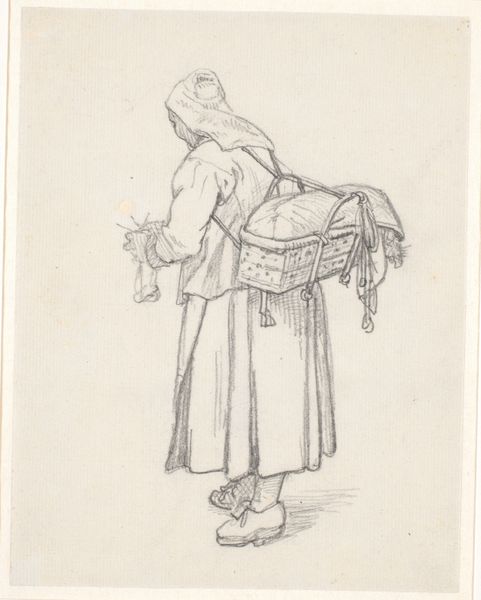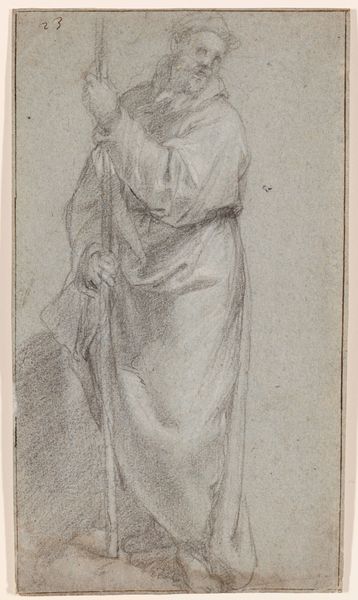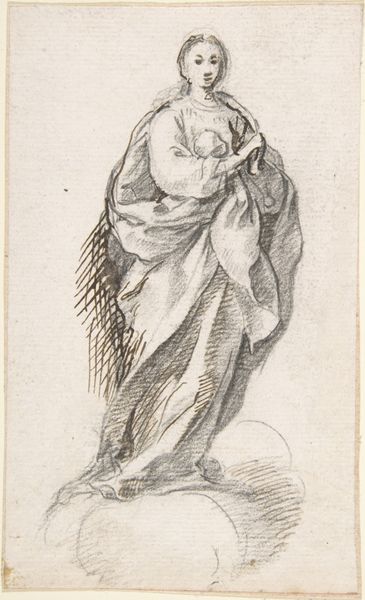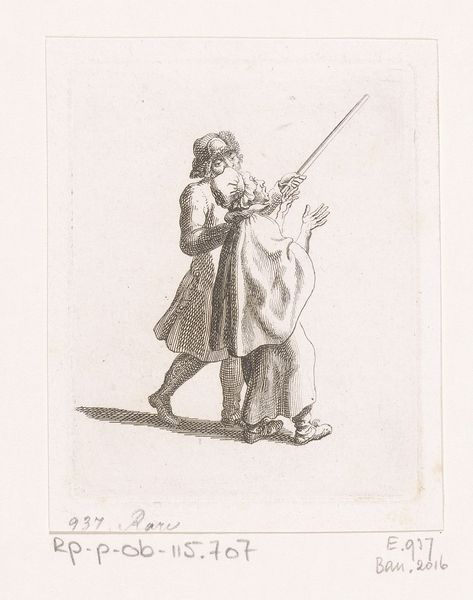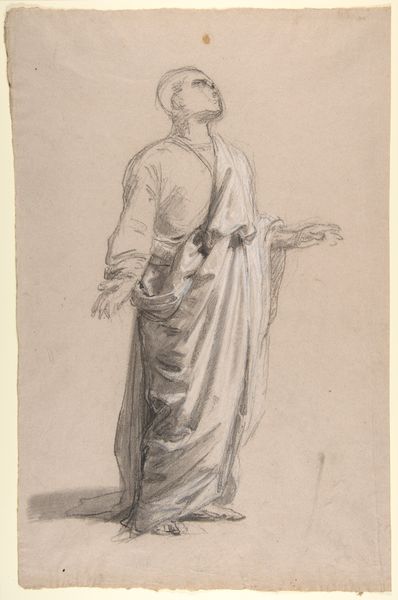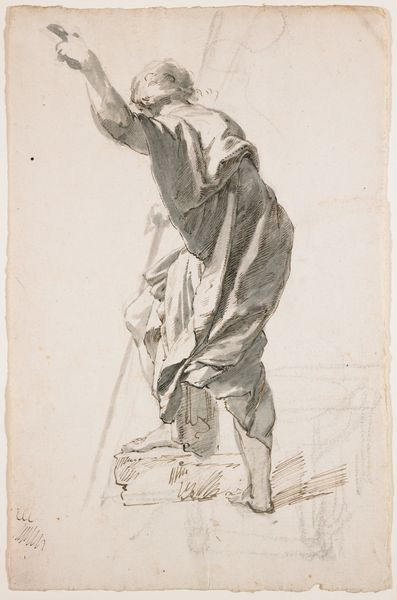
drawing, pencil
#
portrait
#
drawing
#
figuration
#
pencil drawing
#
pencil
#
portrait drawing
#
realism
Dimensions: 16 3/4 x 11 1/2 in. (42.55 x 29.21 cm) (image)
Copyright: Public Domain
Editor: This is "Arab with a Linen," a pencil drawing by Isidore Pils, dating from the 19th century. It's striking how the artist captured the texture of both the linen and the figure's skin using just pencil. What can you tell me about it? Curator: I see here a work deeply embedded in the context of 19th-century Orientalism, but viewed through a materialist lens. The artist’s labor, the act of sketching and the ready availability of pencil and paper, reveals much. Consider the socio-economic power dynamics inherent in depicting an "Arab" subject through the means of mass-produced materials available in Europe. How does that frame our understanding? Editor: That's a really interesting point! It does make me think about how the very accessibility of the pencil allowed for a proliferation of these kinds of images and the spread of Orientalist views. Curator: Exactly. Think about the circulation of these images. Who was consuming them? How did the relatively inexpensive medium shape the perception, perhaps even commodification, of the "Arab" figure for a Western audience? We are looking at both art and the material processes of its production and dissemination. Editor: So it’s not just about what's depicted, but how it was made and for whom? I never considered that before. Curator: Precisely. The linen itself is also significant. What does its presence and representation—as a material good, a commodity—tell us about the relationship between the depicted subject and the artist, and the presumed owner of this work? Editor: I see. So much information about the means of production and the cultural background can be gathered from a single piece of linen and the choice to capture it in pencil. Thanks so much! Curator: Absolutely, understanding art's material processes opens up entirely new ways of reading history. It certainly reframes our appreciation of the art itself.
Comments
No comments
Be the first to comment and join the conversation on the ultimate creative platform.
